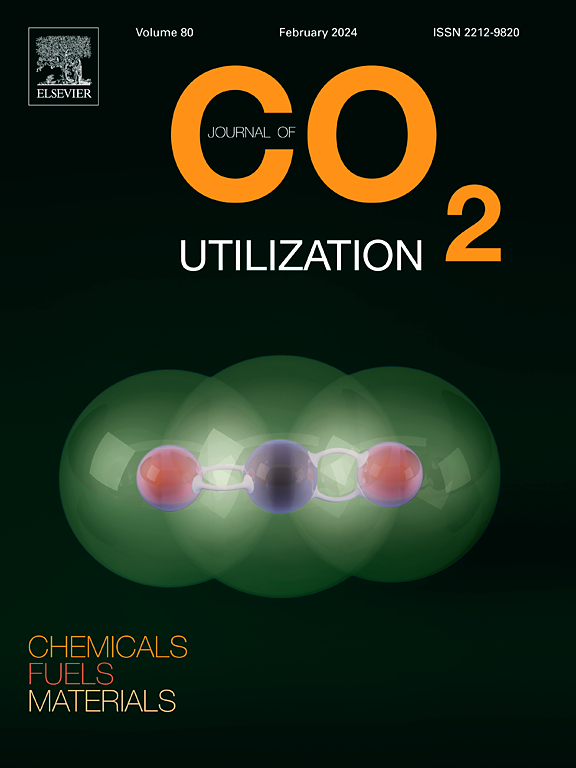具有热敏性和可生物降解性的co2基聚碳酸酯材料的生物粘合剂设计
IF 8.4
2区 工程技术
Q1 CHEMISTRY, MULTIDISCIPLINARY
引用次数: 0
摘要
针对生物毒性、长期稳定性差、界面粘附不足等阻碍组织粘接剂临床转化的挑战,我们利用CO₂衍生聚碳酸酯(PPC)的生物相容性和生物可降解性,创新地将二乙酰- l-酒石酸酐(DATA)加入共聚物中,开发了PPC和DATA交替/随机共聚物(PPCD)生物粘接剂。修改的PPC相比,PPCD展品显著增强胶粘剂性质:剥离强度增加到4.7 ±0.43 N /厘米(273 %改进),密封强度达到67 ± 2.3 kPa(235 %增强),和皮肤粘附强度升至22.1 ±2.3 kPa (增加203 %)。在对比试验中,PPCD在整体机械性能上优于市售纤维蛋白胶。此外,PPCD表现出热响应性粘度调制,在10°C时发生脱粘,与37°C时的粘度相比,热响应效率超过95% %。至关重要的是,PPCD保留了原始PPC的可降解性和生物亲和性,细胞毒性试验证实了>; 98 %的细胞存活率,小鼠组织病理学分析证实了其生物安全性。这种生物粘合剂解决了长期存在的机械坚固性和生物相容性之间的权衡,同时也为生态友好型生物医学材料建立了新的二氧化碳定价策略。PPC的功能化不仅提高了粘合性能,而且开创了碳利用的可持续途径,展示了下一代组织修复技术的变革潜力。本文章由计算机程序翻译,如有差异,请以英文原文为准。
Bioadhesive design of CO2-based polycarbonate materials with thermosensitivity and biodegradability
Addressing the challenges of biotoxicity, poor long-term stability, and inadequate interfacial adhesion that hinder the clinical translation of tissue adhesives, we utilized the biocompatibility and biodegradability of CO₂-derived polycarbonates (PPC) and innovatively incorporated diacetyl-L-tartaric anhydride (DATA) into the copolymerization to develop PPC and DATA alternating/random copolymer (PPCD) bioadhesives. Compared to unmodified PPC, PPCD exhibits significantly enhanced adhesive properties: peel strength increased to 4.7 ± 0.43 N/cm (a 273 % improvement), sealing strength reached 67 ± 2.3 kPa (a 235 % enhancement), and skin adhesion strength rose to 22.1 ± 2.3 kPa (a 203 % increase). In comparative tests, PPCD outperformed commercial Fibrin glue in overall mechanical performance. Furthermore, PPCD demonstrates thermoresponsive viscosity modulation, undergoing debonding at 10°C with a thermal response efficiency exceeding 95 % compared to its viscosity at 37°C. Crucially, PPCD retains the degradability and bioaffinity of the original PPC, as confirmed by cytotoxicity assays showing > 98 % cell viability and histopathological analyses in mice verifying its biosafety. This bioadhesive resolves the long-standing trade-off between mechanical robustness and biocompatibility, while also establishing a new CO₂ valorization strategy for eco-friendly biomedical materials. The functionalization of PPC not only enhances adhesive performance but also pioneers a sustainable pathway for carbon utilization, demonstrating the transformative potential of next-generation tissue repair technologies.
求助全文
通过发布文献求助,成功后即可免费获取论文全文。
去求助
来源期刊

Journal of CO2 Utilization
CHEMISTRY, MULTIDISCIPLINARY-ENGINEERING, CHEMICAL
CiteScore
13.90
自引率
10.40%
发文量
406
审稿时长
2.8 months
期刊介绍:
The Journal of CO2 Utilization offers a single, multi-disciplinary, scholarly platform for the exchange of novel research in the field of CO2 re-use for scientists and engineers in chemicals, fuels and materials.
The emphasis is on the dissemination of leading-edge research from basic science to the development of new processes, technologies and applications.
The Journal of CO2 Utilization publishes original peer-reviewed research papers, reviews, and short communications, including experimental and theoretical work, and analytical models and simulations.
 求助内容:
求助内容: 应助结果提醒方式:
应助结果提醒方式:


